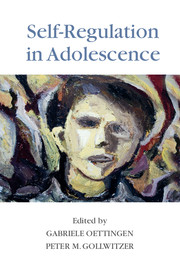Book contents
- Self-Regulation in Adolescence
- The Jacobs Foundation Series on Adolescence
- Self-Regulation in Adolescence
- Copyright page
- Contents
- Preface
- Contributors
- Part I Concepts and Processes of Self-Regulation
- Part II Historical and Biological Influences
- Part III Neural Mechanisms
- Part IV Peer and Parent Relationships
- Part V Interventions
- Author Index
- Subject Index
- References
Part V - Interventions
Published online by Cambridge University Press: 05 October 2015
- Self-Regulation in Adolescence
- The Jacobs Foundation Series on Adolescence
- Self-Regulation in Adolescence
- Copyright page
- Contents
- Preface
- Contributors
- Part I Concepts and Processes of Self-Regulation
- Part II Historical and Biological Influences
- Part III Neural Mechanisms
- Part IV Peer and Parent Relationships
- Part V Interventions
- Author Index
- Subject Index
- References
Summary
Susan Nolen-Hoeksema, Department of Psychology, Yale University; Kirsten Gilbert, Department of Psychology, Yale University; Lori M. Hilt, Department of Psychology, Lawrence University.
*We were deeply saddened by the loss of Susan Nolen-Hoeksema who passed away before this volume went to press.
Correspondence concerning this chapter should be addressed to Lori M. Hilt, Briggs Hall, Room 346, Psychology, Appleton, Wisconsin 54911. E-mail: [email protected]
- Type
- Chapter
- Information
- Self-Regulation in Adolescence , pp. 309 - 388Publisher: Cambridge University PressPrint publication year: 2015

